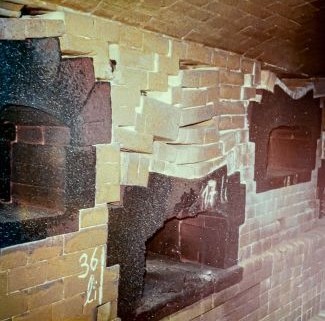Should you interfere with a running kiln system and bet on new firing and control technology, with high investment in perhaps new kiln furniture and the associated changes in upstream and downstream production? Or is it better to build from scratch? But where do you find the space, how do you avoid building a new hall, and how do you compensate for weeks or months of lost production and sales during the production changeover?
And how do you achieve sufficient energy savings to justify such an investment? What is the timeframe for a changeover, and what is the impact of the loss of production associated with a kiln shutdown? And should we invest at all at a time when the market is not ripe for big leaps?
Modernization is always supported by two pillars.
1. The use of “intelligent firing technology” for fully automated firing operations and the elimination of all “energy guzzlers.” The potential for energy savings and emission reductions is up to 40 % in old tunnel kilns.
2. A new kiln lining and, above all, lightweight kiln cars.




Controlling individual burners is nothing new. However, the precision and speed with which a control system takes effect are critical to the result. The latest CTB burner technology is based on precise temperature- and pressure-compensated gas and air flow measurements at the burner. This means that the required gas and air mass flow can be automatically and precisely supplied to each burner. This results in an optimum firing curve in terms of time, temperature, and kiln atmosphere according to the product-specific requirements.
To achieve this, all existing burners were converted to individual control and fitted with automatic gas and air mass flow controllers. Gas rotameters or combustion air metering orifices on the main burners were replaced with mass flow controllers and mass flow sensors, and all the burners in the preheating zone were replaced with new burners with automatic gas firing systems.
This technology eliminates the need for manual burner settings and software conversions. The kiln atmosphere can be set very precisely. Even fluctuating environmental factors such as air pressure, temperature, and humidity are recorded by a weather station and processed accordingly by the control system. As a logical consequence, the temperature of each kiln section is also controlled using the above measurement and control technology, and even temperature differences between opposing burners are taken into account.
During a conversion, the existing combustion air and gas lines to the burner groups are completely removed and replaced by a gas ring line and a central combustion air supply line. Old fans may even remain in place but would be fitted with soft starters and frequency converters. This results in further potential energy savings on the electrical side.
One of the prerequisites for efficient production is to be able to react energy-efficiently to different products and fluctuating production figures with variable firing curves. However, it is generally very difficult to achieve variable cycle times in standard tunnel kilns because the zones can only be operated in stationary mode. The specific energy consumption will roughly double with half the production. With the modernization concept implemented by CTB, the zones can vary locally depending on the pushing time. Only the transition from the firing zone to the cooling zone is kept constant for practical reasons. The firing curve automatically adapts to the production volume in order to optimize consumption.
Due to the usually thick masonry and the associated high heat storage, sudden changes cannot be implemented immediately, but a doubling of the pushing time, e.g., if production is halved, can still be achieved within 24 hours.


In order to achieve the above values, it is necessary to identify and reduce all “energy guzzlers.” All old and heavy kiln cars would have to be dismantled and transformed into “lightweight cars” using prefabricated modules with the same shape and pure fiber insulation. In principle, any kiln rack can be mounted on the specially adapted support system connected to the kiln car frame, whether it is a toothed support system or a more cost-effective superstructure, as can be seen in the following pictures. The very low thermal mass of these kiln cars not only reduces the energy consumption of the individual car by 60 %, but it is precisely these properties that allow the outstanding flexibility and “fast firing” characteristics of a tunnel kiln that are now desired.


Special attention is also always paid to the ease of operation and maintenance of the new kiln technology. As mentioned, the measurement and control technology used by CTB means that no manual adjustment of the burners is required after installation, several years of operation, or replacement! The kiln is controlled by a high-performance PLC housed in the new power and control cabinets.
The current kiln functions are clearly displayed on screens, and each kiln car’s firing data is archived. Even years later, it is possible to determine when and on which kiln car a product was fired – an important prerequisite for successful quality management. An uninterruptible power supply (UPS) ensures uninterrupted firing control, even in the event of brief power cuts or voltage fluctuations.


With good planning and preparation, a conversion can be completed within four weeks. A maximum downtime of two months is usually achieved, including restarting and commissioning.
In many cases, modernizing old firing units and kiln systems is certainly not just an alternative but the ideal financial and technical solution. Courage, experience, and creativity are the keys to success in combining the latest and most innovative technologies with the old.
Tomorrows Kiln Technology Today